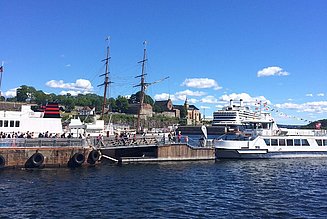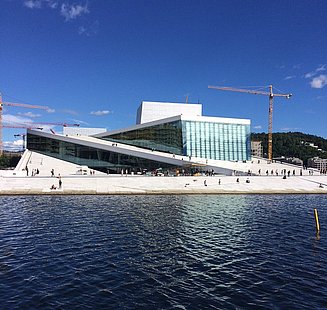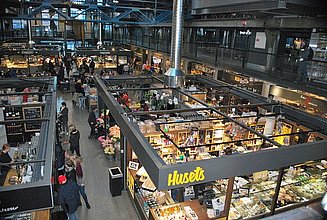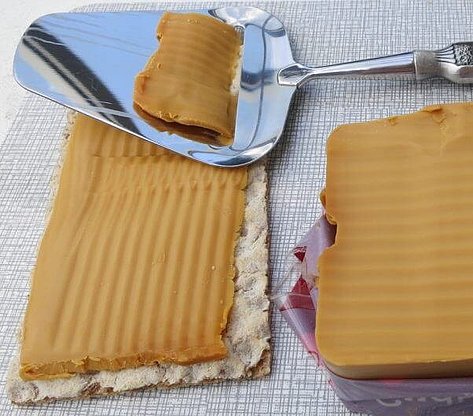A visit to the green capital: Oslo #places
5 min read#places: Oslo
Country: Norway
Inhabitants: ca. 681.071
Area: 454 km2
Famous Landmark: Opera House
The Norwegian capital, Oslo, exudes a sense of Scandinavian lifestyle and was officially named Europe's Green Capital in 2019, with two-thirds of its area covered by forests and water. Especially in summer, the harbor district Aker Brygge invites you to linger and enjoy. Here old shipyard buildings meet modern architecture. The cityscape of the capital is changing rapidly: Where there have once been heavily traveled roads or bridges, lookout points and recreational areas for residents and visitors arise, neighborhoods are being redesigned or created. The great environmental awareness of the country can be felt everywhere. At the same time there is much to discover in the green city: cultural sights, architectural highlights, cute cafés or trendy second-hand shops.
Architecture:
The Barcode Project in the Bjørvika neighborhood is a group of buildings consisting of 12 skyscrapers - each one different in its architecture - completed in 2016. The heights and widths of the buildings differ as well. Between the buildings narrow gaps are located. Seen from a distance, the interaction of the buildings resembles a barcode. Well-known architects such as Dark Arkitekter, A-lab, MVRDV and Snøhetta were involved in the design and implementation of the building complex, which is part of the major project for the extension and reconstruction of the former harbour area.
Address: Dronning Eufemias Gate, Oslo 0191, Norway
While visiting the Aker Brygge neighborhood, do not miss the Astrup Fearnley Museum of Modern Art, which houses a collection of modern and contemporary art. But not only the works of art inside by important artists, among others, from America, Europe and Brazil, are worth to admire - the architecture of the museum is very interesting. In 2012, the museum was designed by the Italian architect Renzo Piano, who combined three pavilions under an impressive glass roof in the form of a sail, creating a direct connection to the harbour. A little hint: The designer hotel "The Thief" is right next door, which has its own art curator, because a collection of contemporary art adorns the walls of the 119 rooms and public areas.
Address: Strandpromenaden 2, 0252 Oslo, Norway
Like a giant iceberg, the New Oslo Opera House towers over the fjord of Bjørvika Bay, inspiring its visitors with its unique acoustics and architecture. Partly built on stilts, it has a direct connection to the water and the harbor and offers a large observation deck from its walk-in roof landscape. The impressive building was designed by the architecture firm Snøhetta as part of an open competition. Particularly striking is the facade of the building, which consists of 36,000 white Italian Carrara marble plates and glass elements. In order not to damage the precious marble by road salt in winter, the entrance area is heated by underfloor heating. The horseshoe-shaped auditorium in the interior is clad with German oak, which is shining due to a special ammonia treatment. In addition, the hall is modeled after the Semper Opera House in Dresden, so that an optimal opera form was created, which ensures the best acoustics.
Since 2010, visitors can admire the sculpture "Hun Ligger (She Lies)", which is located in the harbor basin directly in front of the opera house. It was created by the artist Monica Bonvicini, who was inspired by the painting "The Polar Sea" by Caspar David Friedrich.
Address: Kirsten Flagstads Plass 1, 0150 Oslo, Norway
Interesting Places:
In the Mathallen visitors find all kinds of treats - whether fish and seafood, fresh meat products or cheese specialties. The products are of high quality and the variety is really huge. At the market stands or in the restaurants, the delicacies can often be tried directly. In addition, there are regular cooking classes as well as informative lectures on the subject of "food and enjoyment".
Address: Vulkan 5, 0178 Oslo, Norway
A real highlight in Oslo is the nomadic art project SALT, which combines music, architecture, art and wellness. Several spectacular wooden structures, designed by Sami Rintala (Rintala Eggertsson Architects), offer space for concerts, events and the largest sauna in the world! Up to 80 people can have a nice sauna here at 60 - 80°C. On some days there are even events or movie nights inside the sauna. Water filled wooden barrels provide the perfect cooling afterwards. If you get hungry after the sauna, you can also relax in the beautiful sauna café Naustet.
Address: Langkaia 1, 0150 Oslo, Norway
Restaurants and Cafés:
The Ostebutikken is a small deli shop in the trendy district Grünerløkka. You can also eat delicious here. Inexpensive dishes and tasty soups are perfect for a small meal in between. The shop is specialized in cheese: The typical Norwegian cheese Brunost not only looks like a caramel candy, but also impresses with its sweet-caramel-like flavor. It is a whey cheese made from cow, goat or sheep's milk and tastes best on crispbread. If you feel like having a taste, this is the place for you. In addition, it is worth taking a stroll through the Grünerløkka district, which has a lot to offer with its nice cafés, original designer and vintage shops and hip bars.
Address: Thorvald Meyers gate 27A, 0555 Oslo, Norway
Coffee is a very popular hot drink in Norway, so that Oslo has developed a significant coffee culture. The multiple Barista World Champion Tim Wendelboe knows the preparation in perfection. In his roasting and coffee bar, he offers a variety of coffees, whether from Kenya, Honduras or Brazil - in top quality. As a coffee expert you should definitely stop here!
Address: Grüners gate 1, 0552 Oslo, Norway
Shopping:
If you are looking for a nice souvenir, you will surely find it in the Keramikstudio Embla Keramikk. The artists here make cups, plates, bowls and much more of ceramics and supply, among other things, an Oslo three-star restaurant. You'll also be able to look over the shoulder of the employees in producing the unique and hand-crafted pieces - a great experience!
Address: Hegdehaugsveien 14, 0167 Oslo, Norway
The Norwegian fashion label FIN shows very impressively that clothing can also be produced in a sustainable and environmentally friendly way. As a completely carbon neutral fashion company, it buys certificates that finance climate-friendly energy projects in the countries of origin of the materials. For their clothing, they use handspun wild silk, cotton, bamboo and alpaca wool. The producers in the respective countries are, of course, paid according to the principles of "fair trade". Anyone looking for a climate-friendly garment that also looks fancy will find the collections of the fashion label FIN in the department store Steen & Strøm in Koma.
Address: Nedre Slottsgate 8, 0157 Oslo, Norway
Preparation:
First, the meat is cut into pieces and the cabbage divided into four parts. Layer meat and cabbage alternately in a large pot and sprinkle the different layers with flour, salt and pepper. Now add the water (cabbage and meat must be completely covered) and bring to a boil. Simmer over low heat for 1 to 1 ½ hours until the meat is tender.
By the way: The last day of September, Fårikål Day is celebrated in Norway, where Fårikål is prepared and eaten all over the country.














